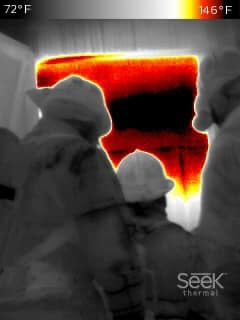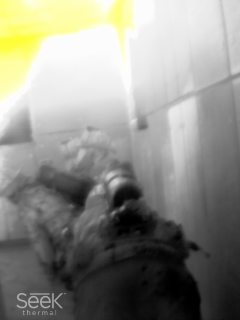
Ever been frustrated with your internet connection as it seems to make live videos freeze for a second and then catches back up quickly? Thus causing you to miss pieces of information you had been glued to the screen to see. The same thing can happen with your thermal imaging camera.
Imagine scanning a room in a hurried yet controlled motion to aid your search. Yet, as you move the camera from shoulder to shoulder it freezes causing you to not see half the room as your partner moves ahead to perform a hands on search. This tool which has been preached as important and valuable let you down and potentially let THEM down.
This is just one scenario demonstrating why we have distinctly divided cameras into two categories. Situational awareness cameras and decision making cameras. The attribute we are demonstrating in this video is refresh rate, measured in hertz. Situational awareness cameras will have a low refresh rate, usually at or below 30hz. Most falling under half that.
Decision making cameras will project a much smoother image without freezing or becoming “choppy” as some have described. This ensures that when we are rushed, we don’t miss valuable information.
The videos below show convection currents and the cameras switching sensitivity modes. Notice how the cell phone video of the Flir K2 displays the low hertz characteristics. While the video from the Flir K53 displays a much smoother video of the convection currents. It also switched sensitivity modes faster.
Have questions? Buying cameras and want to know more? Contact myself, Instructor Andy Starnes, Instructor Thomas Anderson, Terence Shumate, or Jacob Latson for more details on how Insight Training can help you and your department.

